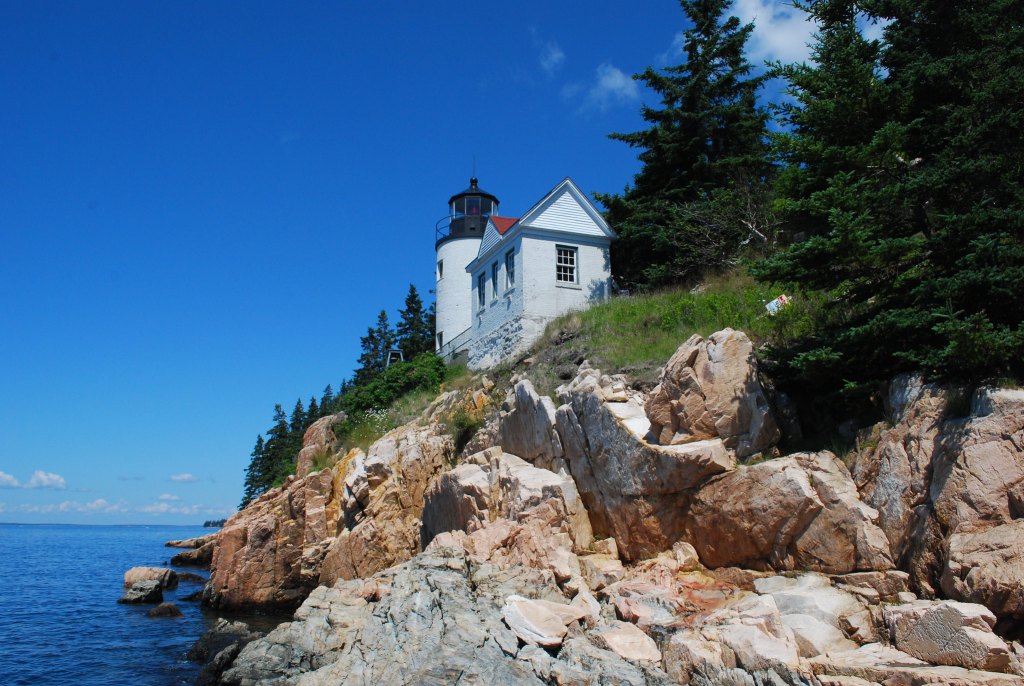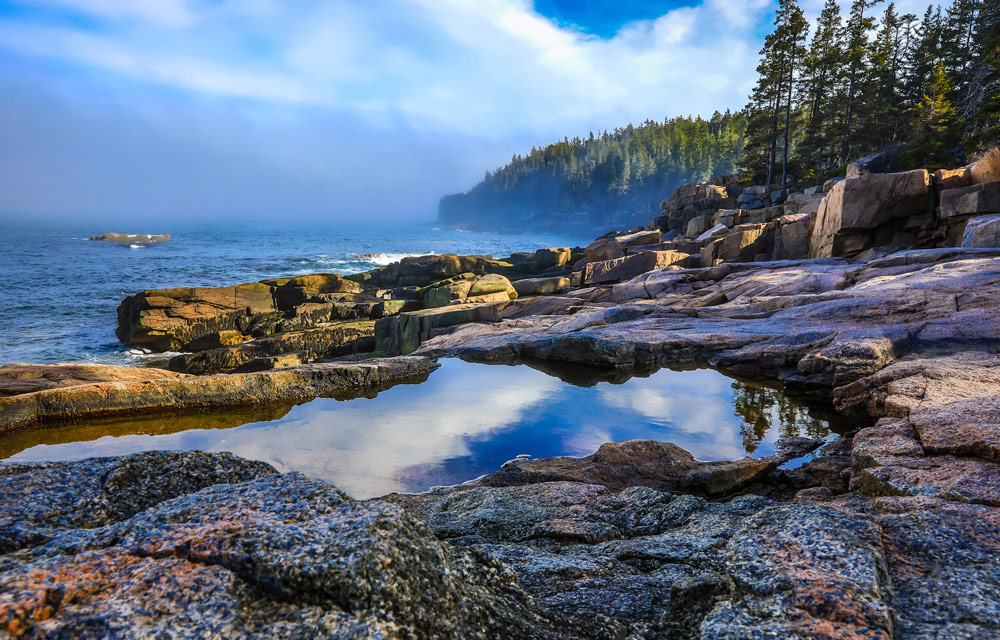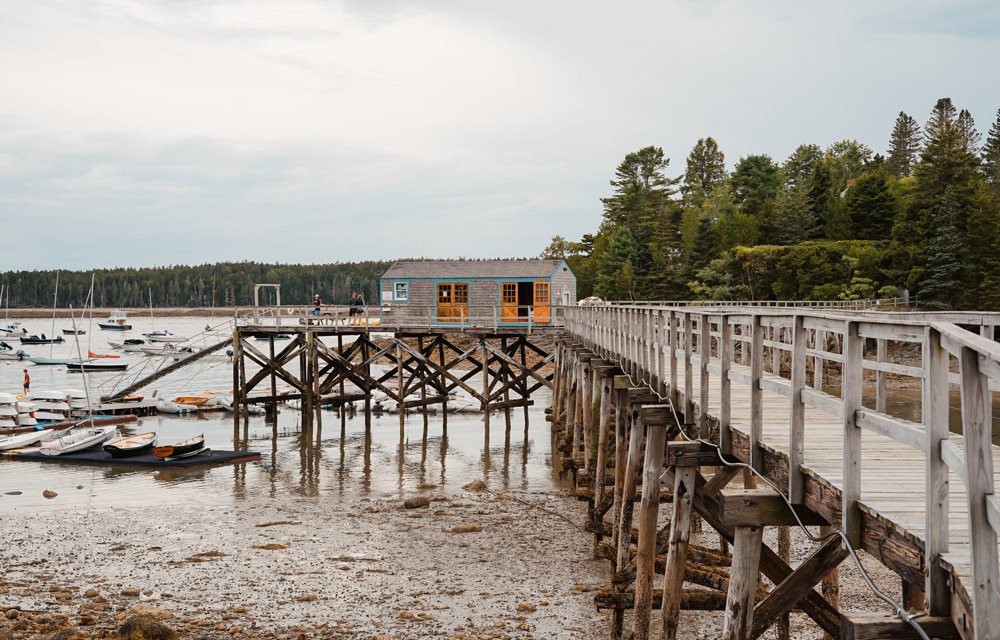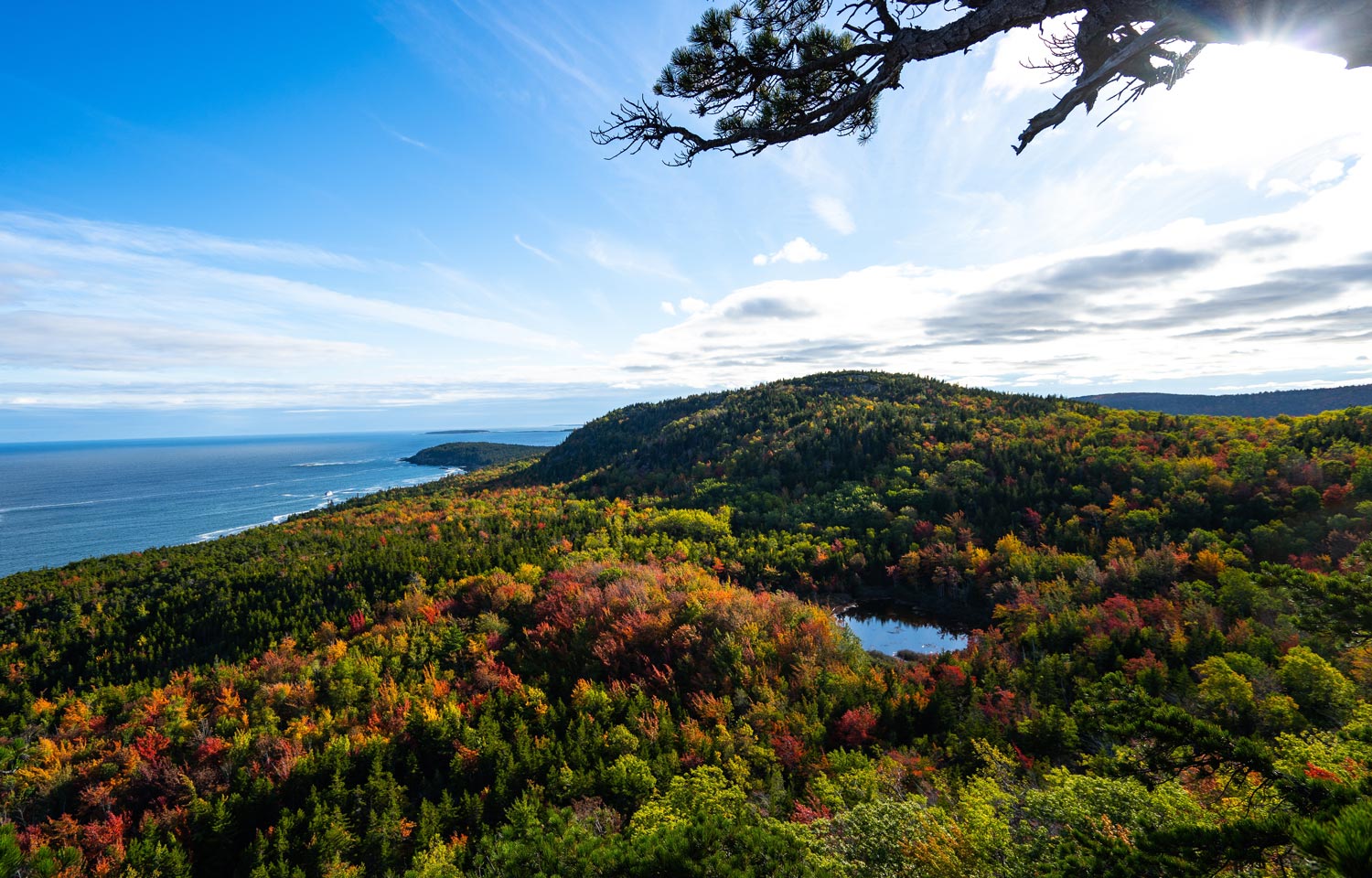In the far northeastern corner of the United States, there’s a spat of land nearly 50,000 acres in size where you can capture mountains, lakes, ocean and forests within a single snap of your camera. That this stretch of Maine coastline, centered on Mount Desert Island, remains pristine is the result of early conservationists who fought to protect the area from the over-development of New England’s shores. Their efforts were rewarded in 1919 with the creation of Lafayette National Park, later renamed Acadia, the first national park east of the Mississippi River.
A century later, Acadia is one of the top 10 most popular national parks with more than 3.5 million visitors in 2018 alone, in part because of its accessibility. It’s only a five-hour drive from Boston and a three-hour drive from Portland, Maine. Yet it still feels remote and wild, full of seals and lobsters, ocean views and mountain vistas.
- Top Places to Visit in Acadia National Park
- Top Things to Do In Acadia National Park
- How to Plan Your Trip
Top Places to Visit in Acadia National Park

The view of Mount Desert Island’s Bass Harbor Head Light. (Photo Credit: John Marino under CC BY 2.0)
Park Loop Road
If you only have one day to explore, head to this 27-mile-long circuit that links many of Acadia’s most famous attractions, including Great Head, Sand Beach, Thunder Hole and Otter Cliff. The route is open April through November, and you can either hop on the free shuttle bus or drive it yourself. Just plan to do the route clockwise, as some of the sections are one way.
Sand Beach
Nestled between mountains and rocky shores on the east side of Mount Desert Island, Sand Beach is only 290 yards long. It’s also the largest stretch of sand in Acadia. Right off Park Loop Road near the Ocean Path trailhead, the beach is a favorite for families. Restrooms, changing rooms, swimming and parking are all available, and there are lifeguards during the summer. But don’t expect warm water. Ocean temps hover around 55 degrees even in the summer, according to the National Park Service.
Thunder Hole
Halfway along the Park Loop Road, you’ll find Thunder Hole, a chasm where crashing waves can shoot ocean spray 40 feet into the air. This is a fun one for kids. Just watch out for slippery footing. There’s easy access from the road, including an accessible overlook. Or if you are in the mood for a hike, take the 2.1-mile point-to-point Ocean Path from Sand Beach south along the coast. The trek will take you directly past Thunder Hole.
Otter Cliff
At nearly 100 feet high, this cliff to the southwest of Sand Beach is one of the premier climbing destinations in the region. There are plenty of beginner-friendly trad and top-rope routes, but climbing isn’t the only way to earn the view: The Park Loop Road and the Ocean Path both traverse the top of the cliff.
Carriage Roads
Winding over stone bridges donated by John D. Rockefeller, the park’s 45 miles of vehicle-free, crushed-stone roads are the perfect way to ditch the traffic and explore by foot, bike or horseback. Or go old school and book a ride in a historic carriage with Carriages of Acadia or Wildwood Stables. The roads form a series of loops, so it’s hard to get lost, but it’s worth downloading or printing a map in case cell service goes out.
Cadillac Mountain
With a road to the summit, it’s no surprise 1,515-foot Cadillac Mountain, Acadia’s tallest peak, is also its most popular. Still, it’s worth braving the masses to snag the epic 360-degree view of Bar Harbor, Frenchman Bay and the smaller isles that surround Mount Desert Island. We recommend getting up early and hiking or driving the Cadillac Summit Road to the top before dawn: The peak is the first place in the U.S. to see the sun each morning from Oct. 7 to March 6. The road to the top is open 24 hours a day, or if you’d rather trek, you can take the North Ridge Trail or South Ridge Trail to the summit.
Baker Island
This small island off the southeast shore of Frenchman Bay can only be accessed by boat, meaning it’s a great place to get away. Each summer, the park offers cruises to the island complete with a ranger-led walking tour where you’ll explore the remnants of the isle’s homestead and the operational 164-year-old Baker Island Lighthouse. Plan to book tickets in advance (search for “Baker Island Cruise”) and keep your eyes open while you’re at sea: You may spot seabirds, seals and other marine mammals along the way.
Jordan Pond House
The Jordan Pond House has been serving afternoon tea since the early 1800s. Waits are long, but don’t worry: There are plenty of walking trails around the 187-acre lake to wander while you wait. Plus, the straight-from-the-oven popovers, a roll that’s become an iconic regional treat, are worth twice the wait. They’re decadent on their own and even more so when spread with fresh jam.
Bass Harbor Head Lighthouse
Bass Harbor Head is located at the end of the aptly named Lighthouse Road, at the very southern tip of Mount Desert Island. A short walk from the parking lot down a set of wooden stairs takes you to the lighthouse. You can’t go inside the fully operational building, but the views are stunning. Pro tip: After watching the sunset, stop by Thurston’s Lobster Pound on the other side of Bass Harbor for a fresh-caught dinner.
Bar Harbor
As the largest town outside the park with just over 5,500 residents, Bar Harbor is both a gateway to Acadia and a destination all its own. Stop by for supplies, to rent gear and book fishing trips before heading into the park, or spend a day or two enjoying the town’s museums, bakeries, shops and ghost tours. The pancakes at Jennie’s Great Maine Breakfast should not be missed, and Parson’s Lobsters, a fresh seafood shop on Eagle Lake Road, will package up your selection to take home, whether your driving or flying.
Top Things to Do In Acadia National Park

A view of Acadia National Park’s Otter Cliff. (Photo Credit: Jim Lukach under CC BY 2.0)
Hiking
Beehive Trail
Best ascent
The 0.6-mile Beehive Trail, a steep, heavily trafficked route to the 527-foot peak of its namesake mountain, may be Acadia’s most famous trek. The ascent requires clinging to iron rungs that have been drilled into the rock, and it’s not recommended for children or anyone with a fear of heights. But the view of Frenchman Bay, Sand Beach and the glacier-carved coast of Maine from the summit is surreal. One note of caution: Don’t take the trail back down. Descending the iron rungs can be dangerous. Instead, follow the Bowl Trail back to where you started.
Bubble Rock
Best illusion
The star attraction on this 1.1-mile out-and-back trail near Eagle Lake and Jordan Pond is the iconic Bubble Rock, a massive boulder perched on the side of a cliff, seemingly ready to tumble at any moment. It’s sure to astound children and adults alike. Just be sure your wee ones are up for the 303 feet of elevation gain.
Precipice Loop
Best workout
Strong, adventurous hikers should head to this 2.3-mile trek. If the 1,073 feet of total elevation gain doesn’t sound tough enough, it should be noted that half of that comes in 0.3 miles as you navigate steep switchbacks, metal ladders and iron rungs up the east face of Champlain Mountain. If that still sounds like your cup of tea, plan your trek for autumn. Endangered peregrine falcons nest and raise their young on the mountain in spring and summer, and the park closes the trail from March 15 to Aug. 15 to protect them.
Ocean Path
Best sightseeing
This well-known 2.1-mile route is fairly flat, with only 300 feet of elevation gain as it meanders from Sand Beach in the north to Otter Point in the south, passing Thunder Hole, Monument Cove, Boulder Beach and Otter Cliff along the way. There are plenty of tide pools to explore, and if you visit in the spring or summer, wildflowers to admire.
South Ridge Trail
Best view
If you want to hike to the top of Cadillac Mountain, the highest point on America’s Atlantic coast, this route is your best bet as it doesn’t parallel the Cadillac Summit Road like its northern twin. From the trailhead on Route 3 near the entrance to Blackwoods Campground, the path climbs over 2,000 feet in 4 miles to the peak, so bring plenty of water and plan for two to four hours of hiking.
Cycling
The best way to explore Acadia may be by two wheels. With 45 miles to pedal inside the park and no motorized vehicles to dodge, the carriage roads are a great place to start. They’re also constructed with crushed stone, so bring a comfortable bike with beefy tires that can handle the terrain. There are plenty of access points including the big parking lots at Jordan and Bubble ponds or hop on the Bicycle Express, a free shuttle from Bar Harbor that will drop you and your steed at the access point near Eagle Lake. The roads generally connect in a way that lets you extend your ride if you’re feeling good and head back home when you’re tired.
You can also cycle the 27-mile Park Loop Road. Just watch for cars and plan to stop at The Precipice, Sand Beach, Thunder Hole and Otter Cliff. Cyclists up for a challenge will enjoy tackling the Summit Road to the top of Cadillac Mountain. The route climbs nearly 1,000 feet in under 4 miles, but the panoramic view of Bar Harbor, the Schoodic Peninsula and the surrounding mountains and islands makes all that sweating worthwhile. Speaking of the Schoodic Peninsula, this landmass to the east of Mount Desert Island has a slice of the national park, complete with a paved loop road and more than 8 miles of gravel paths to explore.
Swimming
Lifeguards staff only two beaches in Acadia National Park: Sand Beach and Echo Lake Beach. The waters off Sand Beach stay chilly, even in summer. If you prefer warmer conditions, Echo Lake, sandwiched between Long Pond and the Somes Sound on the western side of Mount Desert Island, can reach 80 degrees in warmer months. (The park’s other lakes and ponds are public water supplies, and swimming is prohibited.) Other ocean beaches, like Seal Harbor and Lamoine Beach, are open but don’t have lifeguards, so swim with caution.
Climbing
With its glacier-carved granite cliffs, steep crack climbs and epic ocean views, Acadia National Park has some of the best crags in the Northeast.
Otter Cliff
Perhaps the most popular climbing area in the Northeast, Otter Cliff tops out at around 60 feet above the Atlantic and features more than 70 routes from 5.3 to 5.12 with nautical names like Rock Lobster, Drunken Sailor and Climb of the Ancient Mariner. You can top rope 64 of the routes, but there’s also a significant amount of trad climbing to be had. Beware: At high tide, the very bottom of the routes can be underwater.
The Precipice
With 68 routes, the Precipice is the second-largest crag in the park behind Otter Cliff, and its pink granite makes for some amazing climbs with dihedrals and aeries, crack and sharp crimps. There are plenty of iconic routes that shouldn’t be missed like the 5.6, three-pitch Story of O and Chitlin’s Corner, a 170-foot 5.10a trad climb.
South Bubble
Most of the climbing at the small crag near Jordan Pond is slab, with little holds and less gear. South Bubble also offers a few good beginner trad routes on the Lower Slab. Moraviana, a 5.7 trad, and Gargoyle, a 5.8 trad, are both two-pitch climbs worth checking out.
Great Head
The high-grade, sea cliff climbing at this trad, top-rope and sport-climbing site east of Sand Beach is best left to the experts. It’s also one of the prime places in the park to find empty walls. Though many of the routes are 5.11 and up, one of the crag’s most popular climbs is the moderate trad and top rope Full Sail (5.6). But whatever you plan to climb, the park service recommends checking the tides and weather before you head out.
How to Plan Your Trip

Boats wait for high tide near Mount Desert Island’s Northwest Harbor. (Photo Credit: Toa Heftiba on Unsplash)
Best Time to Visit Acadia
Maine earned its Vacationland nickname for a reason, and Acadia National Park is always bustling during the summer when temperatures top out in the 80s. That festive vibe is part of the attraction, but if crowds aren’t your thing, visit in September or early October, when the hoards of summer vacationers have waned and before the leaf peepers make their annual pilgrimage.
According to the park service, Acadia’s colors usually peak in mid-October. The exact dates vary every year, so check out the state’s online leaf-peeping guide that’s updated every week throughout fall with the best places to go and times to visit.
Although temperatures range from 10 to 35 degrees in the winter, the offseason in Acadia offers its own magic, with snow-laden paths and quiet tourist sites. You can expect consistent snow and most of the roads in the park are closed. That said, two routes remain open: Ocean Drive and Jordan Pond Road. You can hike the Ocean Path during the winter, too. Or better yet, cross-country ski or snowshoe the carriage roads. Things tend to reopen in spring, but March, April and May can still be quite foggy and wet.
What to Pack
Layers, layers, layers. Even in the summer, it can drop into the 40s at night, and while showers are rare that time of year, storms can develop quickly, so pack some waterproof clothes. In the shoulder seasons, a wind jacket, base layers and a midweight top such as a fleece jacket are essential, and a down jacket would be useful.
Getting To and From Acadia National Park
Most people drive to the park, which is located about three hours from Portland, Maine. You can also fly into Bangor International Airport, a little over an hour to the northwest by car, on most national airlines, or book one of the direct flights from Boston’s Logan Airport to Hancock County Airport, just 10 miles from the park. If you do fly, you’ll want to rent a car. Although the free Island Explorer shuttle is a great way to get around the park, it can be hard to get to and from your hotel without a vehicle.
Where to Stay
Plenty of hotels and short-term rentals are in Bar Harbor and Southwest Harbor, both cute fishing towns with Down East charm. There are also plenty of places to sleep under the stars. Backcountry camping isn’t allowed in the park, but the park service manages four front-country campgrounds inside Acadia, two of which are on Mount Desert Island. Seawall, in the island’s southwest, has spacious developed sites, a few RV hookups, flush toilets and is a 10-minute walk from the shore. Blackwoods, larger than Seawall and closer to Bar Harbor and the park’s most popular attractions, tends to be the busier of the two. You can snag reservations for both sites up to six months ahead of your stay—consider booking as far out as possible since they both fill up quickly. Or stay in one of the 14 private campgrounds that surround the park, from the Schoodic Peninsula in the east to Isle au Haut in the southwest.
Acadia National Park Pass Information
From May to October, there’s an entrance fee of $30 per vehicle, $25 per motorcycle and $15 for walkers and cyclists, each good for seven days. Entrance is free for the rest of the year. If you plan to visit often, consider an annual pass for $55 or the annual America the Beautiful Pass, which covers entrance into every national park and costs $80. Senior citizens, active members of the military, families of fourth-grade students, and disabled citizens are also eligible to receive discounted or free passes to all national parks year-round. To save time, buy your pass online. Otherwise, plan to grab one at a park entrance when you arrive.
